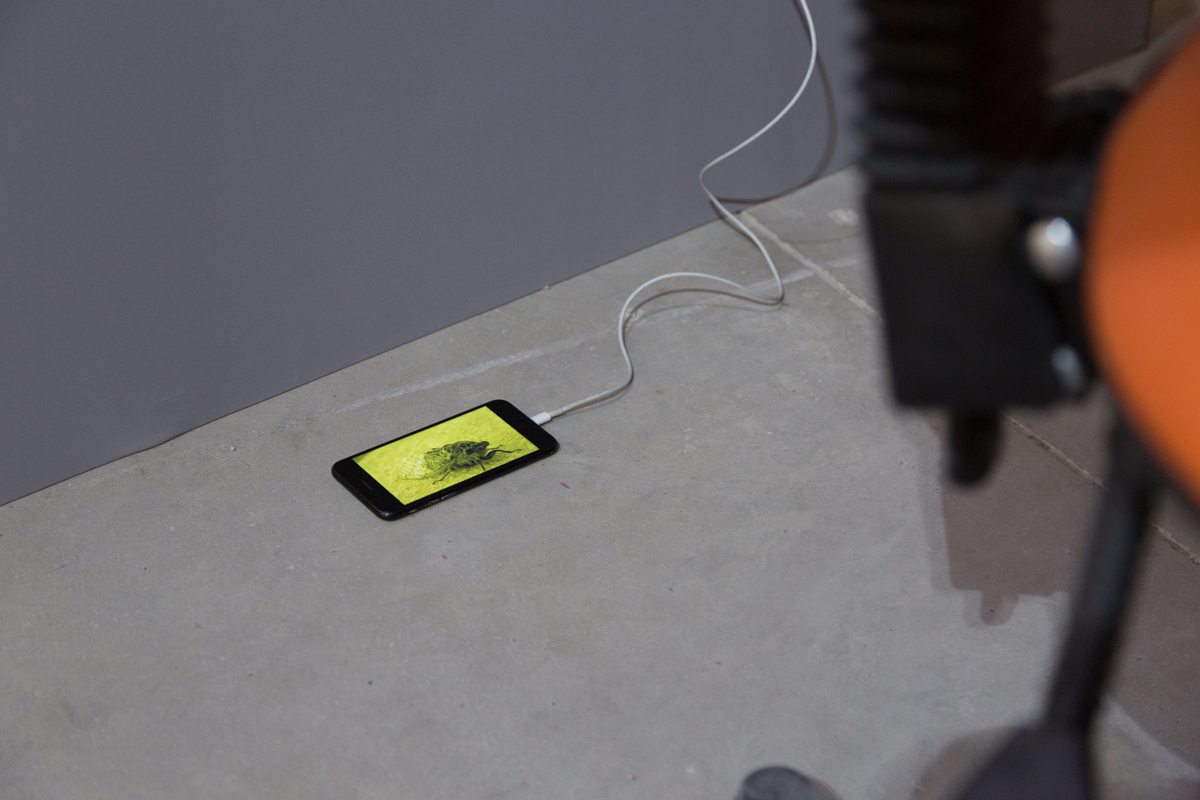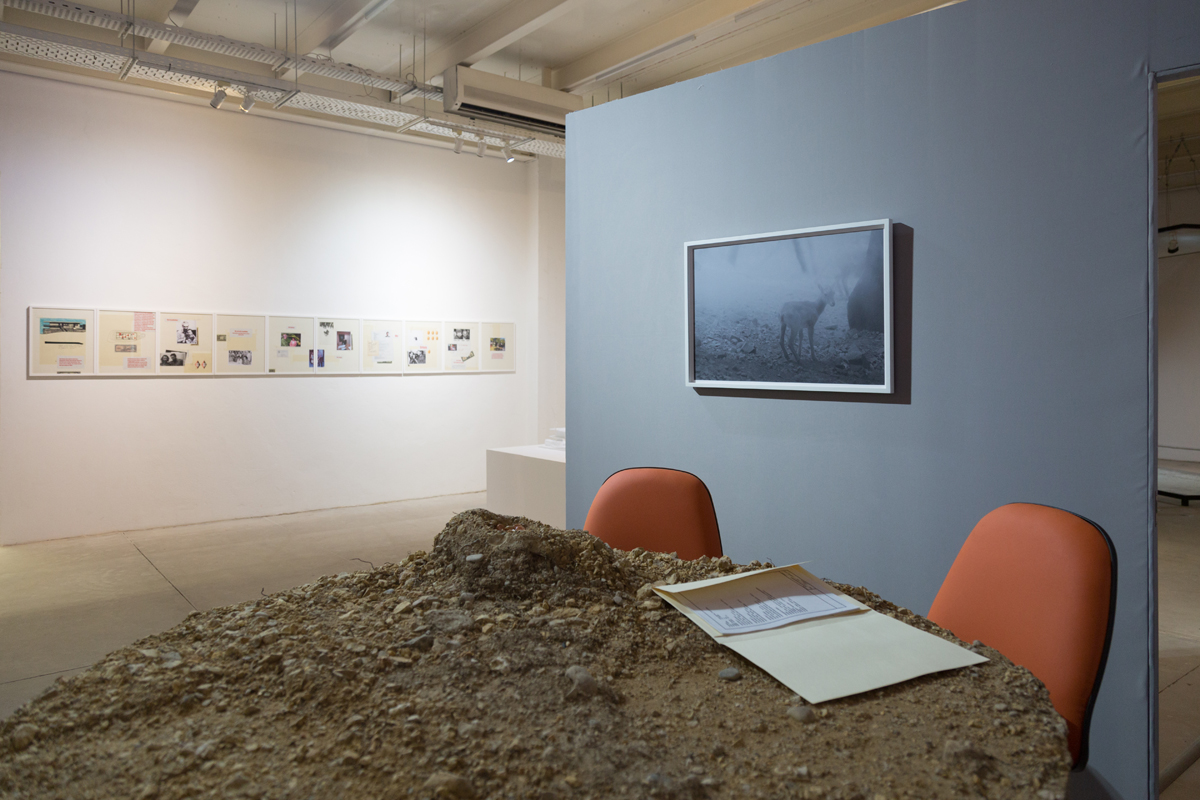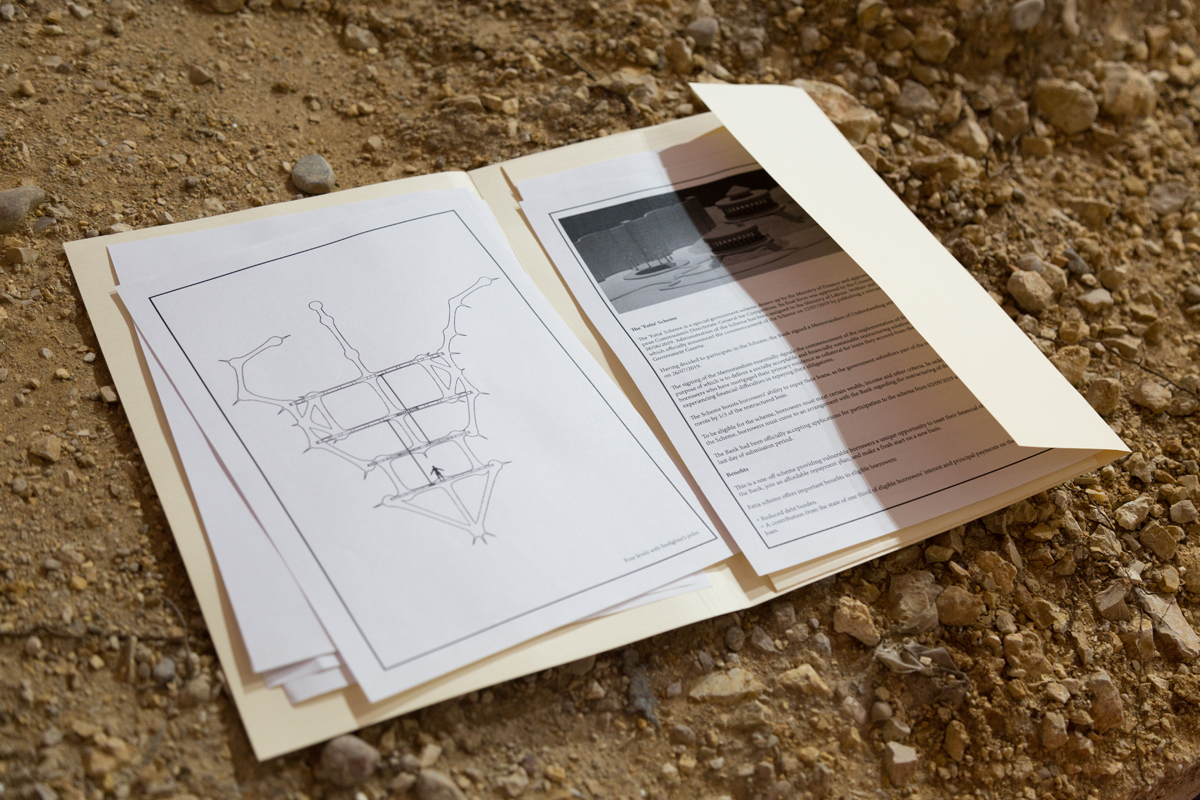Photos courtesy of Beirut Art Center
Fine Print
22/06 - 01/10/2022
Beirut Art Center, Beirut, Lebanon
BAC information pack Fine Print
BAC information pack The Broken Pitcher
Broken Pitcher handout
Poster designed by Ghiya Haidar
In a slick corporate interior setting and with a warm smile, a finger points to the section you should have read and whose consequences you are currently facing: the fine print, like the rest of the contract, is couched in opacity and complexity, so as to be dismissed until it is too late.
In this exhibition, the fine print is proposed as an operative synecdoche for a rigged economic system, its collapse, and the implications of its so-called recovery. The Broken Pitcher, a collaborative project by Natascha Sadr Haghighian, Marina Christodoulidou and Peter Eramian, forms the central component of the exhibition, departing from the context of the recent financial meltdown in Cyprus and unraveling its various global threads. In addition to hosting this project, Beirut Art Center has invited artists to respond more specifically to the Lebanese economic reality, with an eye to think across shared struggles between these two Mediterranean contexts and beyond.
The Broken Pitcher consists of a reconstructed meeting room in a bank placed in the exhibition space and a 70 min film, screening on the mezzanine floor, exactly above the set. It shows a reenactment of a crucial negotiation at a bank over the foreclosure of a family home in Cyprus. The scene was improvised following the recollections of an affected family. Various individuals respond to a question asked by one of the actors through the fourth wall: ”In your opinion, what should the bank employees do?” The bank room set and its parts were conceived collaboratively together with Raissa Angeli, Stelios Kallinikou, Orestis Lazouras, Faysal Mroueh, Nayia Savva, Maria Toumazou and Emiddio Vasquez who each took on a separate aspect of the set. For the Beirut iteration, the set and its artworks were reproduced locally. The Broken Pitcher reflects how financialisation, austerity measures, debt and colonial histories, construct and codify everyday precarity, insidious violence and radical unsettling.
Fine Print expands on these themes and motifs with eleven additional artistic contributions, including seven new commissions that more specifically address the financial crisis in Lebanon, its realities, consequences and vernaculars. Since 2019, when the fine print of our financial conditions couldn’t but finally be scrutinized, metal sheets have replaced the glass doors of Lebanese financial institutions. Facades have fallen, thresholds wrecked and defaced, surveillance cameras and ATMs smashed. The works in Fine Print revisit the past, explore personal affiliations, and expose the changing materiality cladding and clouding financial institutions and cash liquidity. Probing the construction of value based on relationships of exchange, the exhibition splinters the larger print of “a country in collapse” to comprehend who profits from such a diagnostic and who pays the price for it.
Subverting institutional display protocols, Petra Serhal situates the construction of the Lebanese political economy and monetary policy in the historical context following independence. Helene Kazan unearths the colonial lineage of control over resources and territory in her film installation, all while grounding abstract notions of financialisation and risk in a slow observation of the landscape. The eerie familiarity of the past returns in Chyrstèle Khodr’s recounting of the circumstances surrounding Intra Bank’s downfall in 1966. The ecological dimension of this extractive legacy is revisited in Mahmoud Safadi’s living sculpture, where the structured relationships between food, land and capital are laid bare and juxtaposed with strewn bodies and forgotten mythologies. Drawing parallels between the cycles and vocabularies of neoliberal economics, and those of romantic relationships, Khodr’s contributions echo the linguistic manifestations of polite institutional violence present in Carey Young’s works. In Firas El Hallak and Christian Zahr’s contributions, the scale of the body encounters the materiality of the digital and architectural interfaces that regulate the relationship between banking institutions and the individual. In his autobiographical installation, Levi Orta collaborates with Núria Güell to re-read the sale of his cursed familial home and the discovery of a worthless treasure against the backdrop of inflation and revolutionary possibility.


















